- Home
- Services & Solutions
- Disaster Mitigation・Crisis Management・Climate Change Measurements
- Dam Reservoir Inflow Forecasting System
Services & Solutions
Dam Reservoir Inflow Forecasting System
Predicting Inflows into Dam Reservoirs using the Distributed Rainfall-runoff Model and Supporting Their Operations
The “dam reservoir inflow forecasting system” is a system that predicts reservoir inflow and river discharge, using the distributed rainfall-runoff model*. Highly accurate dam reservoir inflow forecasting is effective for safe dam and reservoir operations in the event of sudden increase in water inflows and efficient hydropower operations. Japan Weather Association (JWA) supports efficient dam reservoir operations by utilizing the distributed rainfall-runoff model that uses grid-based precipitation information as input data, to predict changes in discharge at any point.
(*) Distributed rainfall-runoff model: A model that calculates and predicts changes in discharge at any point within the dam basin, by dividing the dam basin into grids(meshes) of 100 to 500 meters and sequentially calculating the flow of water between the adjacent grids.
Service Content
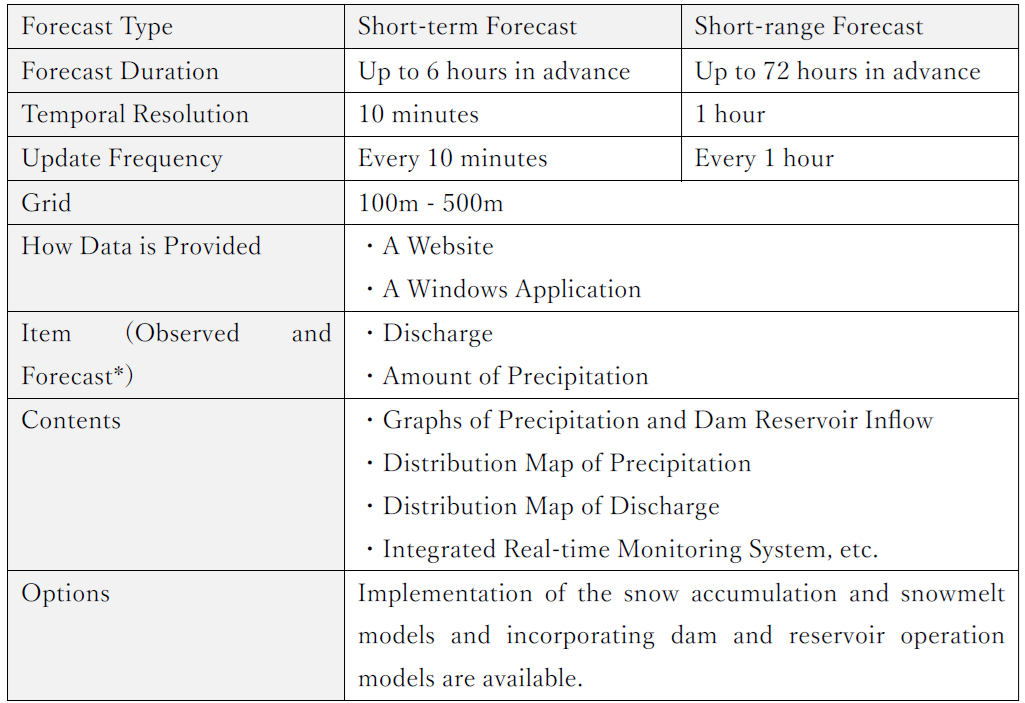
*The accuracy can be enhanced by incorporating the observed values owned by the customer.
- Option 1: Implementation of a snow accumulation and snow melt model
- By introducing a snow accumulation and snowmelt model, we provide discharge forecasts that take into account the amount of snowmelt.
- Items such as the amounts of snow accumulation and snowmelt are also available.
- Option 2: Incorporating the dam and reservoir operation models
- The system can be built according to the dam's specific characteristics, such as the dam's operating rules and emergency spillway gate operation guidelines.
- The forecasts for dam reservoir levels and downstream river discharge are also available.
Features
- The forecasts of changes in discharge at any points are available.
- Floods due to localized torrential rainfall can be calculated, using high-resolution precipitation data in grid units as input data.
- Real-time incorporation of observed and forecasted rainfall, which allows for automatic prediction of dam inflow based on rapidly changing weather conditions.
- The contents are provided according to customer needs, including time-series graphs of precipitation and dam reservoir inflow discharge, and distribution maps of precipitation and discharge for each grid.
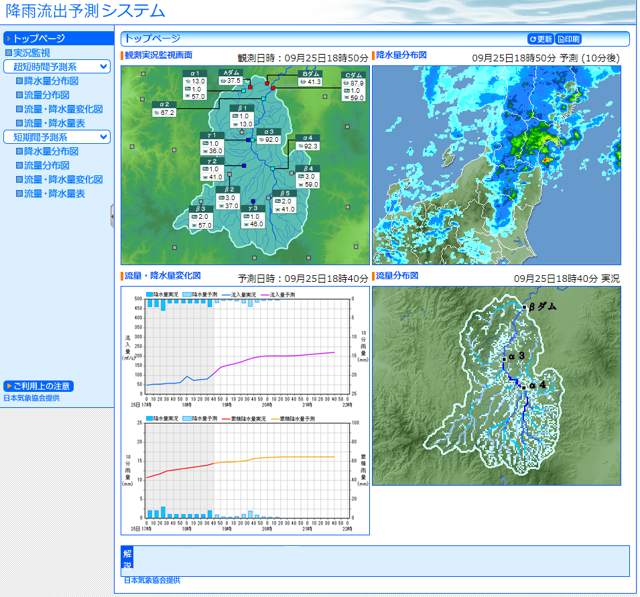
Example of a system of the dam reservoir inflow forecasting
Applications
- Reservoirs and river management in the event of floods
- Hydroelectric power planning
Related News
・Japan Weather Association received two awards from the Chubu Branch of the Japan Water Agency. (July 21, 2022, Japan Weather Association announcement)
https://www.jwa.or.jp/news/2022/07/17337/
・Japan Weather Association received an Award from the Dam Engineering Society of Japan (December 27, 2021, Japan Weather Association announcement)
https://www.jwa.or.jp/news/2021/12/15471/
・Japan Weather Association received an Award from the Dam Engineering Society of Japan (June 3, 2021, Japan Weather Association announcement)
https://www.jwa.or.jp/news/2021/06/13494/
・Japan Weather Association received an Award at the 2nd Deep Learning Business Utilization Awards (October 16, 2020 Japan Weather Association announcement)
https://www.jwa.or.jp/news/2020/10/11302/
・Japan Weather Association starts the operation of “Decision Making Support Service for Reservoir Discharge” – Introduced at two dams in Chiba Prefecture; Started patent application for AI-based precipitation forecasting method – (July 3, 2020 Japan Weather Association announcement)
https://www.jwa.or.jp/news/2020/07/10357/
・Japan Weather Association launches “Decision Making Support Service for Reservoir Discharge” – Aiming to reduce flood damage by providing “high resolution” and “high accuracy” forecasts up to 15 days in advance. – (March 6, 2020 Japan Weather Association announcement)
https://www.jwa.or.jp/news/2020/03/9451/
・Japan Weather Association develops AI-based downscaling method for rainfall forecasts in the “spatiotemporal direction” – Considering future use of this method for efficient dam operation and improving the accuracy of flood forecasts – (August 30, 2019 Japan Weather Association announcement)
https://www.jwa.or.jp/news/2019/08/7901/
Contact an expert for this service.
Services & Solutions Services & Solutions
-
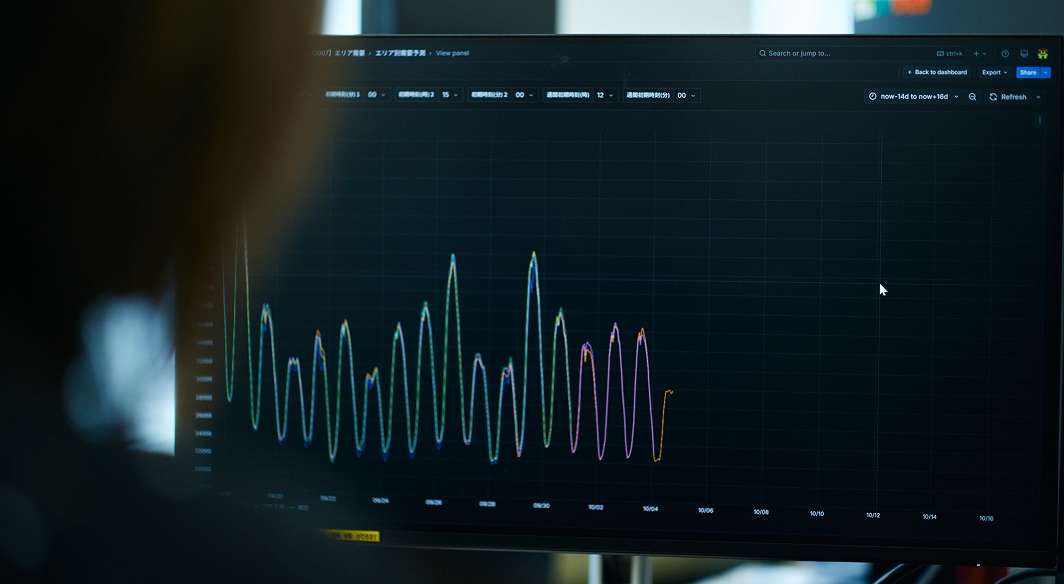
Electric Power Demand Forecast
-

Solar Power Generation
-
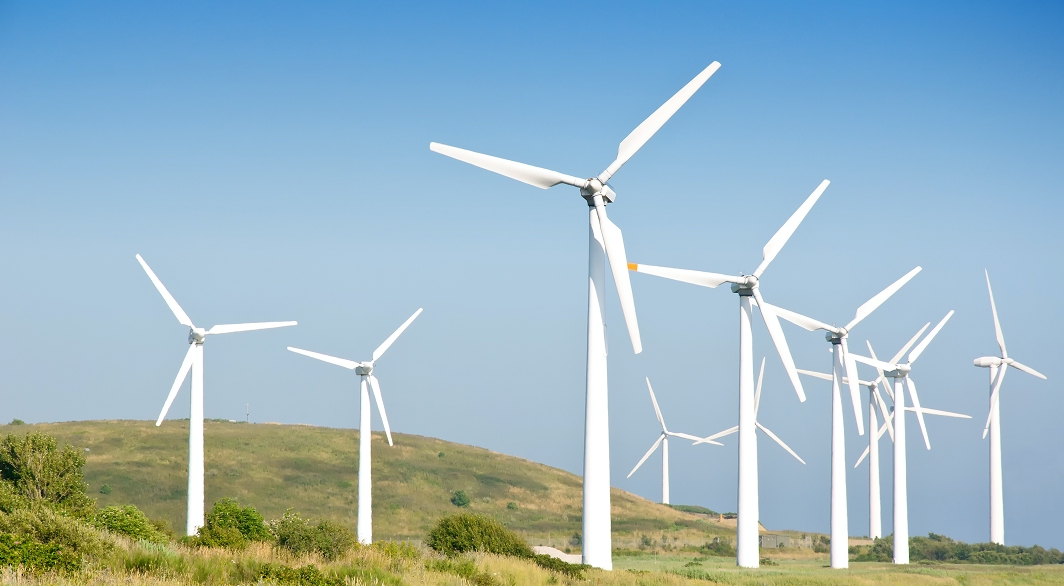
Wind Power Generation
-

Environmental Impact Assessments
-
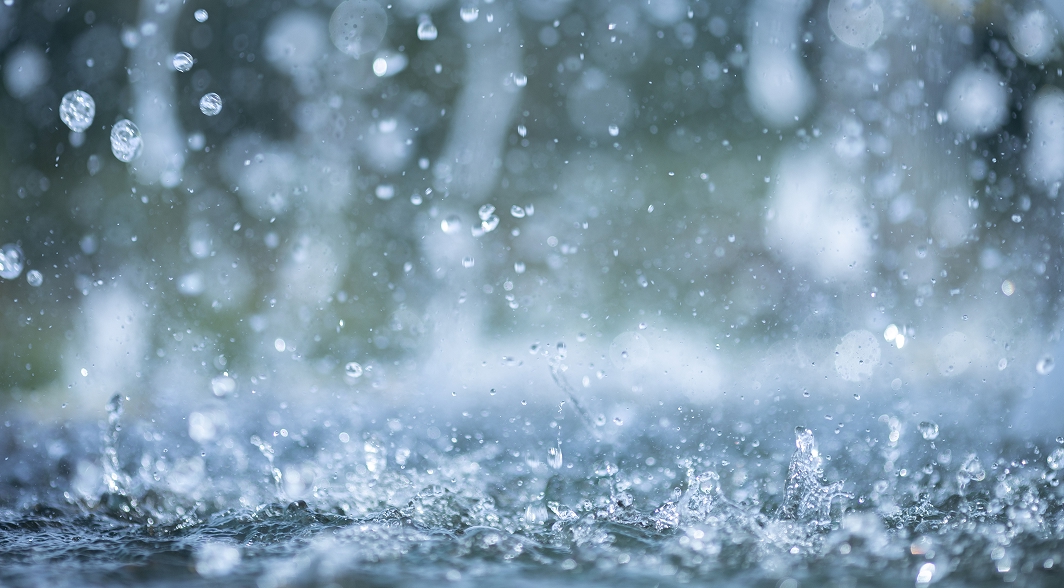
Disaster Mitigation・Crisis Management・Climate Change Measurements
-

Transport (Roads, Rails, Air, Oceans)
-
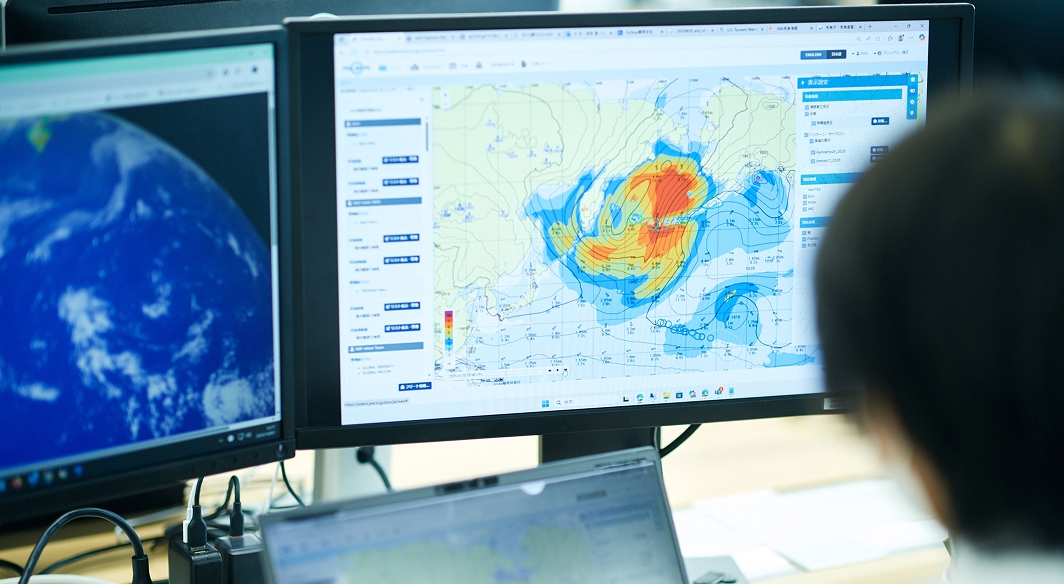
Meteorological and Oceanographic Forecasts & Real-Time Data Provisioning
-

Manufacturing, Retail, Advertising, and Marketing
-

tenki.jp & Media Services
-

Web, Apps and Other Services

